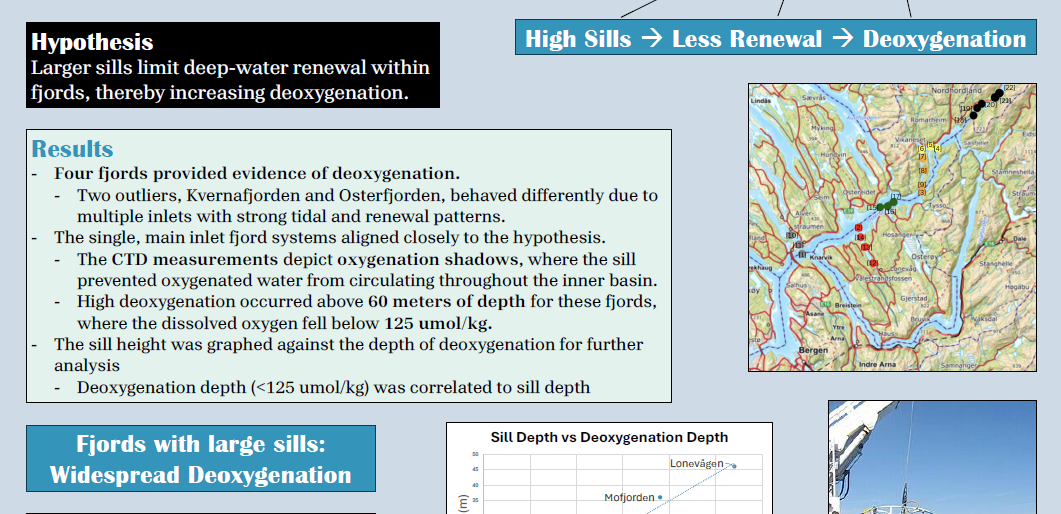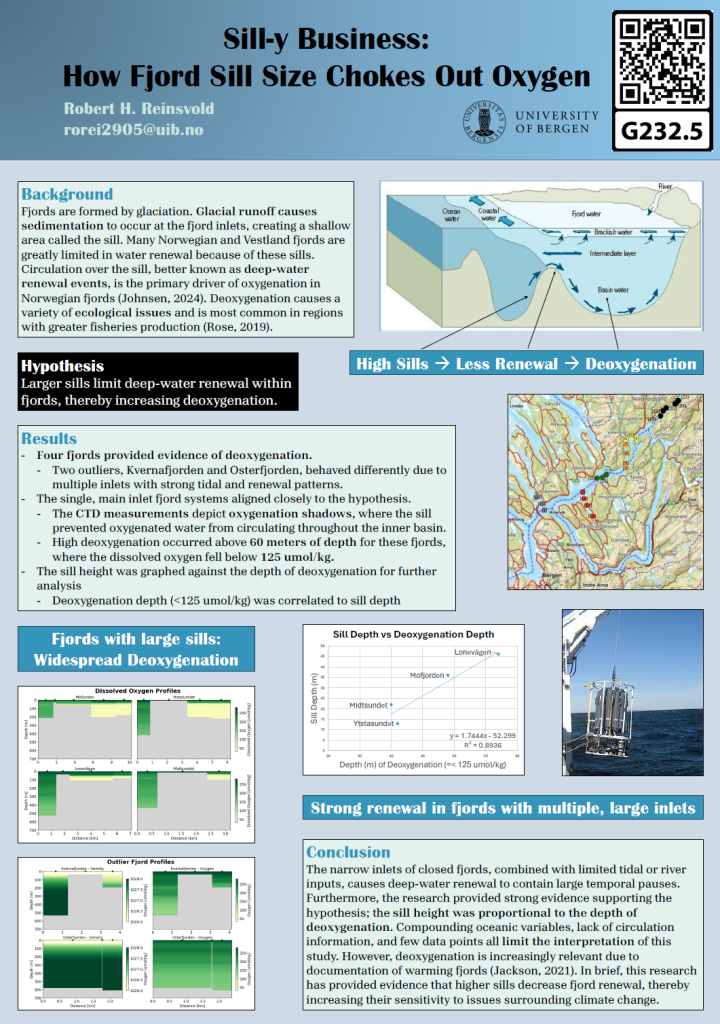Abstract
Fjord basins are increasingly at risk of climate-induced deoxygenation. The cyclical processes within fjords can take decades, creating stagnant, oxygendepleted masses of water. Studies reveal Norwegian fjords are particularly vulnerable to decreased oxygen-rich intrusions due to the warming of North Atlantic Waters (NAW) by 1 °C (Aksnes, 2019). Defined as the shallow seafloor of a fjord inlet, sills drive circulatory processes. Circulation over the sill is accredited as the primary driver of oxygenation in Norwegian fjords (Johnsen, 2024). This study investigates the effect of sill sizes through standardized CTD measurements: dissolved oxygen, temperature, depth, salinity, photosynthetically available radiation, and chlorophyll. Of the six fjords analyzed, the four with a single inlet provided evidence indicating larger sills decreased circulation in the fjord basins, thereby increasing deoxygenation. Low oxygen levels, (=< 4 mg/L) occurred at higher depths behind shallower sills, further exemplified by a graph and trendline; R^2 = 0.8936. Many ecological issues arise at least in part due to oxygen loss, such as algal blooms, decreased biodiversity, and habitat stratification. Further research could explore how freshwater intrusion and anthropogenic solutions could alleviate these stressors.


